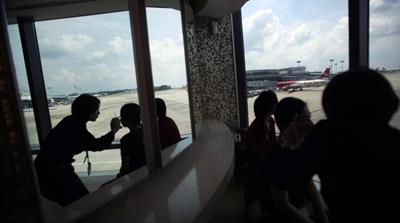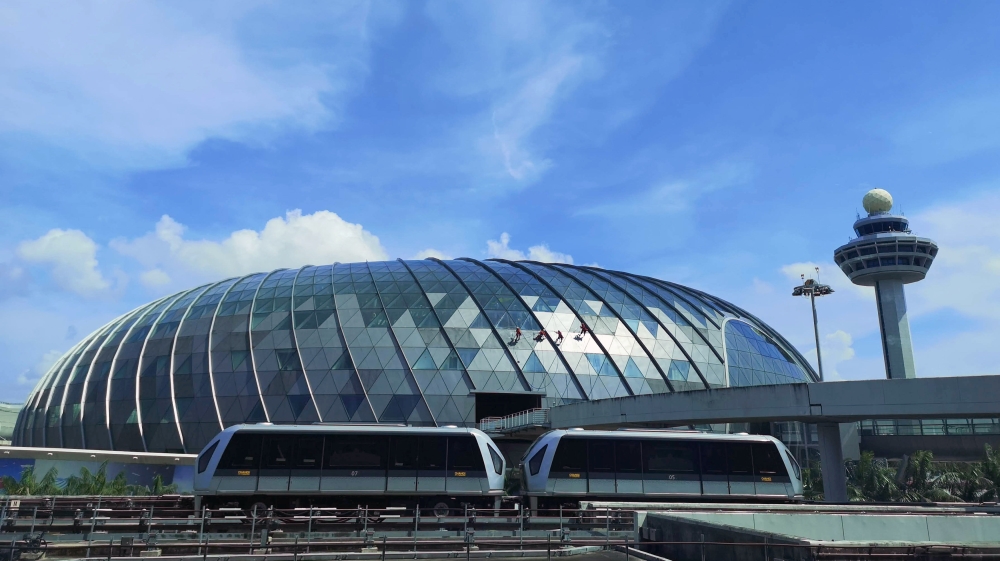
Ho Chi Minh, Vietnam – You’ve endured the long queues at check in and immigration; patiently sat on the floor of a packed departure hall after being informed of a delay to your flight; before being eventually told to walk across a baking tarmac to your plane.
For many passengers daily, this is the reality of flying around parts of Southeast Asia, where growth in the number of airports and related infrastructure has failed to keep up with a surge in demand. And a mushrooming of regional budget airlines vying for limited take-off and landing slots at these airports is making competition among carriers fiercer than ever and raising safety concerns. But new technologies promise to alleviate at least some of the pain in the short term.
Nowhere in Southeast Asia are these problems more acute than in Vietnam, the region’s fastest-growing civilian aviation hub.
The number of passengers travelling through its airports has grown on average by 16 percent a year since 2010, hitting 94 million last year, up from 25 million in 2012, according to the Centre for Asia Pacific Aviation (CAPA), a research firm.
But Vietnam has completed just two new airports since 1975. A replacement for Ho Chi Minh City’s Tan Son Nhat facility – Vietnam’s largest airport – has been discussed for years, but construction has yet to begin.
Meanwhile, the rest of Southeast Asia isn’t far behind in terms of growth in demand for flights. CAPA says the number of passengers across the region is growing by around 10 percent a year. Cambodia, Laos, Myanmar, Thailand and the Philippines are all experiencing double-digit expansion rates.
But unlike Vietnam, some of its neighbours are growing their airport capacity. Singapore will open additional facilities at Changi International Airport this year, with another terminal planned beyond that, while a $5.3bn project is underway to expand capacity at Bangkok’s Suvarnabhumi International Airport from 45 million passengers annually to 125 million by 2024.
 |
| Airports in parts of Southeast Asia are getting busier as more airlines open up [File: Wong Maye-E/AP Photo] |
Despite Vietnam’s infrastructure constraints, airlines are investing heavily to cater to growing demand from its increasingly affluent middle class. Last month, Bamboo Airways, a subsidiary of resort developer FLC Group, became Vietnam’s fifth airline by completing its first commercial flight. It aims to operate 50 planes by the end of the year.
VietJet Air, a major Vietnamese budget carrier, has provisionally ordered 150 more planes to add to its already large fleet. And AirAsia, Southeast Asia’s largest low-cost carrier, has also announced plans to launch a Vietnamese airline.
Until now, the surge in demand has been great for VietJet Air. Its pre-tax profits rose by 22 percent last year compared to 2017.
But it’s in something of a minority. CAPA says that of Southeast Asia’s 20 publicly traded airlines or affiliates, only six made profits in the third quarter of 2018.
And intense competition could result in slimmer profit margins even for VietJet Air in the coming years.
“There are still growth opportunities in Vietnam, but to think that existing airlines can continue to grow at the rate we’ve seen the last few years, plus with at least one other airline possibly entering the market, something will have to give,” Brendan Sobie, CAPA’s Southeast Asia analyst, says.
“A lot of the population now is flying, and fares are already very low, so it’s not realistic to think that they could go lower,” Sobie adds.
Technology to the rescue
Ageing airports may be uncomfortable for passengers, but they also mean more congestion for Asian airlines. The growing number of carriers have to compete for a limited number of slots per day to take off and land. Airports are required to keep planes sufficiently far apart in the sky to prevent collisions.
But companies such as Honeywell International, which makes the electronics used in flight-management systems among other products, says modern technology can safely squeeze more planes into a given part of the sky, allowing airports to increase capacity while they build more physical infrastructure.
 |
| Technology that allows more planes to fly into and out of airports such as the one in Singapore could help relieve congestion [Edgar Su/Reuters] |
Brian Davis, Honeywell’s vice president for Asia Pacific airlines, says many carriers are not using such systems to full effect.
“So the airplanes are capable, and what we need to do is make sure the airspace routes … are taking advantage of the equipment that’s on board,” Davis adds.
Wanted: More pilots
Another bottleneck that’s emerging in Southeast Asian aviation is a lack of pilots and the capacity to train them. This is a particularly acute need in Vietnam, which has just one flight-training centre.
The local arm of Lithuania-based BAA Training will open another such facility in Ho Chi Minh City in May.
“Vietnam is a country with some of the fastest growth in the aviation market right now,” says Vytautas Jankauskas, BAA Vietnam’s CEO. “Bamboo has a huge job to do, and without the support of independent training centres like us, it would be very hard to meet those goals,” he adds.
BAA plans to install four flight simulators which would train 360 pilots a year, Jankauskas said.
The BAA facility will also provide advanced safety training, something that’s become a major concern recently.
In December, three VietJet flights experienced problems, including a technical issue, a hard landing resulting in damage to the front landing gear and a crew landing their plane on the wrong runway. No one was hurt in any of the incidents.












